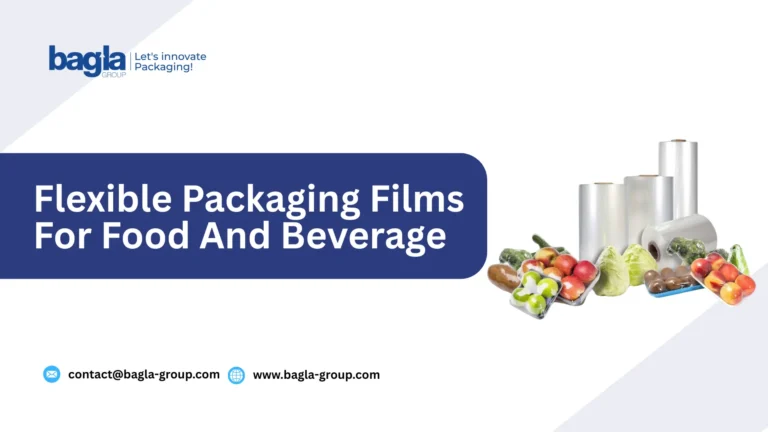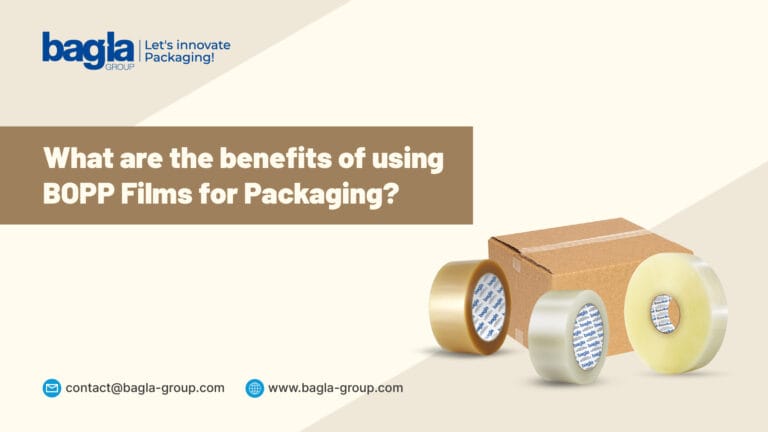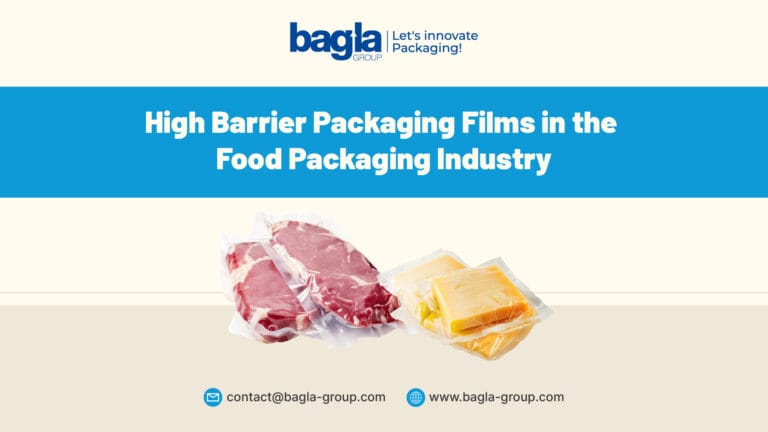Nowadays, frozen food has become a part of our daily life, as it is convenient and extends shelf life. To maintain the freshness and quality of their food, there are various alternatives available for frozen food packaging. Among these alternatives, businesses need to choose one of the best packaging films to package their products.
In this article, we will explore the different types of frozen food packaging and how Bagla Group’s advanced packaging films play a vital role in delivering high-quality frozen products to consumers.
Why Frozen Food Packaging is so Important?
Utilizing suitable packaging is essential to preserving food safety and quality from the day of The use of suitable packaging is vital for the safety and quality of food from production to consumption. Some examples include:
- Protection from freezer burn: improved packaging decreases moisture loss, causing undesirable ice crystals.
- Flavor and texture preservation: the flavor, texture, and nutrients of frozen food are retained.
- Food safety: packaging acts as a barrier to possible contamination sources and harmful environmental influences.
- Temperature safety: packaging protects the integrity of food in cold storage.
- Shelf life extension: packaging prevents degradation of shelf life for frozen food, resulting in reduced waste.
- Shelf view improvement: Clear and well-designed films improve shelf view.
- Emphasis on sustainability: There are now films available that promote sustainability, such as Bagla Group’s sustainable POF shrink films.
5 Types Of Frozen Food Packaging
Frozen food packaging must ensure durability, clarity, and protection against moisture and temperature changes. The main types of frozen food packaging available include:
- Non-Crosslinked POF Shrink Films: These films are ideal for low-weight frozen items with excellent clarity, flexibility, and sealing performance to help them look great and be protected.
- Cross-Linked POF Shrink Films: These films are constructed with high strengths and puncture resistance to provide a tight wrap and the durability to accommodate heavy frozen products or frozen products that are irregularly shaped.
- Sustainable POF Shrink Films: These recyclable films are another environmentally friendly product that still has clarity and performance, while being more cognizant of the environment.
- Medium Barrier Thermoforming Films (QuenchTek MB): These films are designed to have medium barrier properties to keep outside contaminants or moisture out of the frozen coolers to help keep the quality of the frozen food products during frozen storage.
- High Barrier Thermoforming Films (QuenchTek HB): These high barrier films are maximally protective against contaminants and freezer burn, and should always be used for vacuum-sealed frozen meats or seafood.
Factors To Consider When Choosing Frozen Food Packaging
Choosing proper packaging to protect frozen foods from safety and quality problems is crucial. When selecting from various types of frozen food packaging material, consider the following factors:
- Barrier Properties: Protect against moisture, oxygen, and freezer burn.
- Temperatures: Withstands freezing conditions without cracking.
- Seal Strength: Seals tightly without leaking.
- Clarity: Shelf appeal or impact.
- Sustainability: Look for recyclable films, such as Bagla Group’s Sustainable POF Shrink Films.
- Cost & compatibility: Make sure the films will run efficiently on a machine and provide value long term.
Why Choose Bagla Group For Frozen Food Packaging Films?
Bagla Group is a reputable organization in the market for innovative, dynamic packaging solutions. With decades of experience in freeze-packaging applications. Bagla Group manufactures frozen food packaging films that are high-performance and that add value by maintaining a product’s freshness, safety, and aesthetics.
There are three types of frozen food packaging available: Non-Cross-Linked POF Shrink Film, Cross-Linked POF Shrink Film, and Sustainable POF Shrink Film, along with QuenchTek MB Thermoforming Film and QuenchTek HB Thermoforming Film. Each is category-leading (for its market segment) in barrier protection, transparency, and strength. Additionally, it’s shown that all five films are freezer-friendly.
Conclusion
In summary, if food manufacturers want quality packaged frozen food products safe for their customers, the frozen food packaging options offer an important level of decision-making. Flexible films, vacuum packs, paperboard boxes, and aluminum trays; they all protect and preserve frozen food while meeting their retailer partner’s sustainability or innovation responsibilities/needs. Whether the market continues to change, if food manufacturers have sustainability or innovation at the top of their priority list, then the food manufacturer will confidently determine their packaging partner (i.e., Bagla Group) to protect longevity and brands.
FAQs
What Types Of Packaging Is Popular When It Comes To Frozen Food?
The most accepted frozen food packaging is polyethylene bags and laminated pouches, as they are flexible in nature and provide a barrier to the product.
Does Packaging Help To Prevent Freezer Burn?
As long as food is covered from air and moisture, vacuum or laminated films assist in reducing freezer burn, to help prevent food from dehydrating or from becoming crystalline.
Are Frozen Food Packaging Recyclable?
Yes, some newer films and boxes are recyclable or more environmentally friendly.
Why Should I Buy Packaging For Frozen Foods From Bagla Group?
Bagla Group offers high-quality, custom sustainable packaging films for frozen foods.



